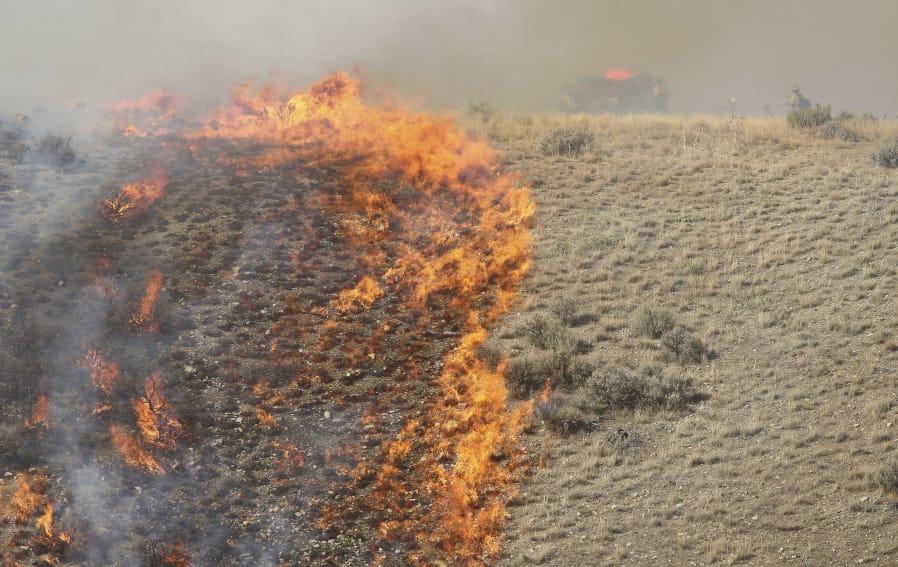SALT LAKE CITY — The Trump administration is proposing an ambitious plan to slow Western wildfires by bulldozing, mowing or revegetating large swaths of land along 11,000 miles of terrain in the West.
The plan that was announced this summer and presented at public open houses, including one in Salt Lake City this week, would create strips of land known “fuel breaks” on about 1,000 square miles of land (2,700 square kilometers) managed by the U.S. Bureau of Land Management in an area known as the Great Basin in parts of Idaho, Oregon, Washington, California, Nevada and Utah.
The estimated cost would be about $55 million to $192 million, a wide range that illustrates the variance in costs for the different types of fuel breaks. Some would completely clear lands, others would mow down vegetation and a third method would replant the area with more fire-resistance vegetation.
It would cost another $18 million to $107 million each year to maintain the strips and ensure vegetation doesn’t regrow on the strips of land.
Wildfire experts say the program could help slow fires, but it won’t help in the most extreme fires that can jump these strips of land. The breaks could also fragment wildlife habitat.
An environmental group calls it an ill-conceived and expensive plan that has no scientific backing to show it will work.
A U.S. Geological Survey report issued last year found that fuel breaks could be an important tool to reduce damage caused by wildfires, but the agency cautioned that no scientific studies have been done to prove their effectiveness and that they could alter habitat for sagebrush plants and animal communities.
The Bureau of Land Management says it has done about 1,200 assessments of fuel breaks since 2002 and found they help control fires about 80 percent of the time.
The strips of land that would be 500 feet or less would be created along highways, rural roads and other areas already disturbed such as right of ways for pipelines, said Marlo Draper, the Bureau of Land Management’s supervisory project manager for the Idaho Great Basin team.
They won’t prevent fires, but they should reduce the costs of having to battle major blazes because fuel breaks reduce the intensity, flame length and spread of fires and keep firefighters safe, Draper said.
It cost about $373 million over the last decade to fight 21 fires that were larger than 156 square miles on lands managed by the bureau in Utah, Nevada and Idaho, according to a report explaining the proposal.
“It gives us a chance to get in front of it and put fires out more quickly,” Draper said.
Western wildfires have grown more lethal because of extreme drought and heat associated with climate change and by housing developments encroaching on the most fire-prone grasslands and brushy canyons. Many of the ranchers and farmers who once managed those landscapes are gone, leaving terrain thick with vegetation that can explode into flames.
The proposal is out for public comment and pending environmental review. If approved, some of the land could be cleared as soon as next year while other projects could take several years, she said.
The plan comes after President Trump last December issued an executive order last December calling on the Interior Department to prioritize reducing wildfire risks on public lands.



